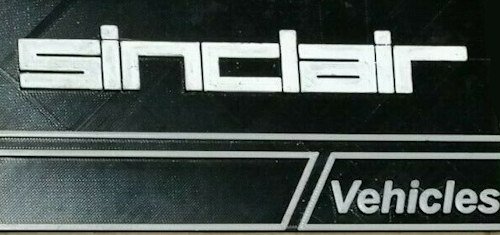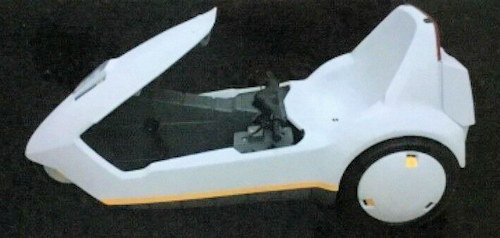Sinclair Vehicles
Automotive manufacturer from Wales,United Kingdom; From 1984 to 1985.

Sinclair Vehicles Ltd was a company formed in 1983 by Sir Clive Sinclair for focus on electric vehicles.
History
The only Sinclair Vehicle production model was the small Sinclair C5, a single-seater three-wheeled electric vehicle. Sinclair originally also planned a four-seat version called C15.Sinclair Vehicles were renamed as TPD Ltd in October 1985 but liquidation followed a month later.
The Sinclair C5 is a three-wheeled electric vehicle developed by Sir Clive Sinclair in 1979 and manufactured by Hoover in Merthyr Tydfil , Wales , UK, beginning in November 1984 . Sinclair believed that this vehicle could revolutionize local passenger transport. Sinclair invested part of its assets in the sale of equity interests in Sinclair Research and employed Barrie Wills as a manager, who previously worked for the US DeLorean Motor Company .
Powered the C5 by a DC motor with 250 W (0.34 hp), which could be supported with pedals. The engine was supplied by Polymotor, a subsidiary of Philips . He was fed a 12 V lead-acid battery from Oldham Batteries with a capacity of 36 Ah . The vehicle had a forked rear central tube frame made of sheet steel and a lining made of polypropylene. The permissible total weight was 160 kg with a luggage space of about 40 liters. Overall, the Sinclair C5 should come with a battery charge around 32 kilometers. The top speed was 24 km / h. The driver sat leaning back on a padded seat, the handlebar was under his knees like a recumbent bike, There was no suspension.
Sinclair led the C5 on January 10, 1985 in the UK for around £399 to £428 in the market. Consumer and motor vehicle associations expressed security concerns and the media criticized the inadequate weather protection and the short range. The expected sales could not be achieved. The vehicles did not have the promised quality. In August 1985, production was stopped after nearly 17,000 vehicles and the manufacturer Sinclair Vehicles was insolvent. Many of the vehicles produced were later purchased at inflated prices of up to £ 5,000. Enthusiasts and collectors also modified the vehicle model with monster wheels, jet engines, or added high-performance electric motors to accelerate their C5s to speeds of up to 240 km / h.

